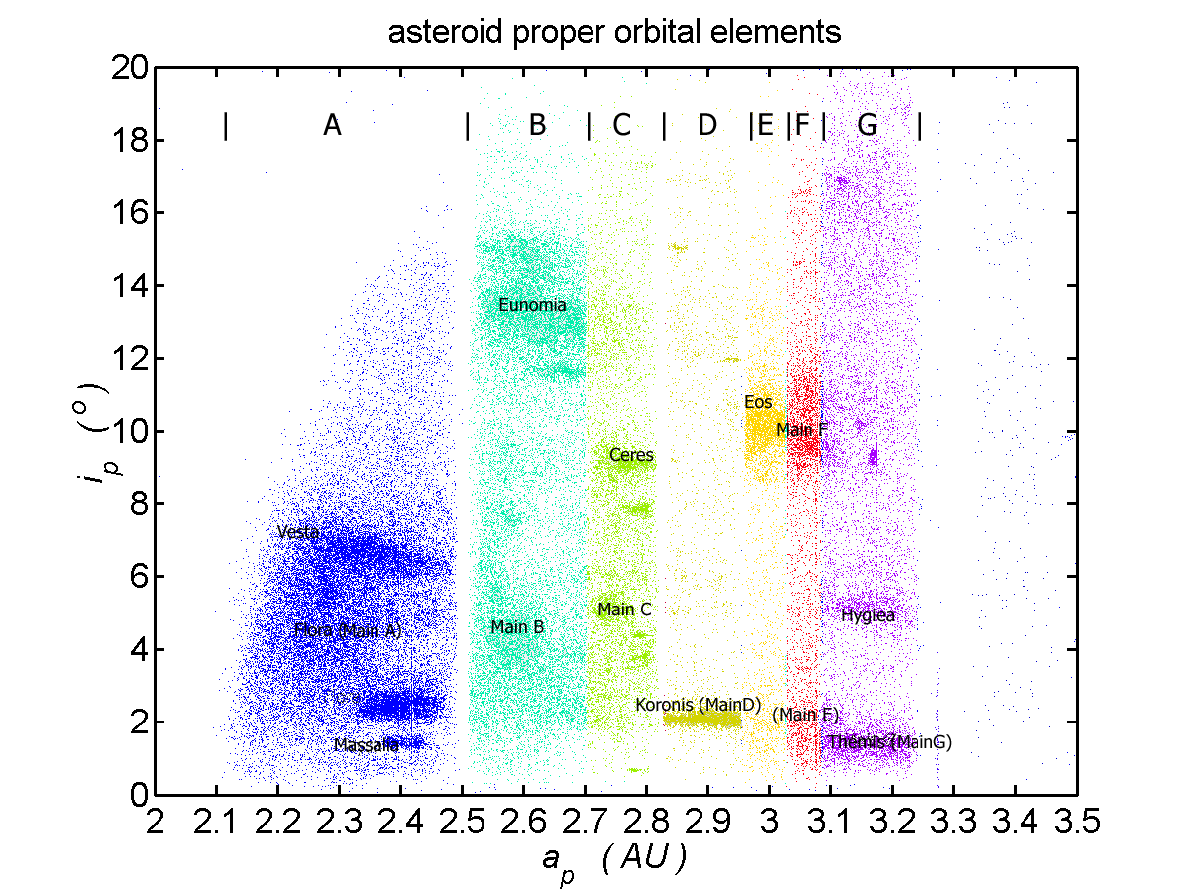
A detailed examination of a catalog of orbital elements of comets and/or asteroids will reveal that the orbits therein are not entirely random; rather, there will appear to be various objects that seem to share similar orbits. While in some instances these resemblances may be coincidental, in many more cases the similarities are real, and show a familial relationship between the objects. Analogous to a biological “family,” both at the species and at the individual level, a “small bodies” “family” indicates a common origin between the objects involved.
The most obvious example of a “small bodies” “family” is the Kreutz sungrazing comets, several of which are “Ice and Stone 2020” “Comets of the Week” (including next week’s). As was discussed in the “Special Topics” presentation on Kreutz sungrazers seven weeks ago, these are all clearly fragments of one large comet that split up several millennia ago, with the comets that we see nowadays being at least second-generation or third-generation fragments. The large Kreutz sungrazers that we have seen during the relatively recent past have been seen to fragment as well, so our descendants several centuries from now should see the next-generation fragments, and meanwhile the tiny sungrazers we constantly see in space-based coronagraphs (like those aboard the SOlar and Heliospheric Observatory (SOHO) spacecraft) may well be small debris resulting from the splitting of earlier generation members.
During the quarter-century that SOHO has been operating other comet “groups,” indicative of a common origin, have also been found in images taken by its coronagraphs. One of these “groups” was first pointed out by a German amateur astronomer, Maik Meyer, and is characterized by a perihelion distance of 0.04 AU and an orbital inclination near 72 degrees. As of now over 280 “Meyer Group” comets have been detected and while they clearly must all have a common origin, thus far there is no information about any periodicity.
Meanwhile, a second group was first pointed out by former Minor Planet Center Director Brian Marsden, characterized by a perihelion distance of 0.05 AU and an inclination near 27 degrees, and a third group was first pointed out by another German amateur astronomer, Rainer Kracht, and characterized by a perihelion distance of 0.05 AU and an inclination near 15 degrees. Thus far there have been about 60 “Marsden Group” comets and about 50 “Kracht Group” comets identified. The comets in these groups have orbital periods in the vicinity of 5½ to 6 years and some of them have now been seen on multiple returns; indeed, at least one Marsden Group comet, P/1996 V2, has now been seen on four different returns, and another one, P/1999 J6, has been seen on three different returns. The two groups may be related to each other, and may also be associated with other inner solar system phenomena, including Comet 96P/Machholz 1 and some meteor showers like the Quadrantids and the daytime Arietid meteor shower in June. The Marsden Group orbit, in particular, passes quite close to Earth, and in June 1999 Comet P/1999 J6 would have passed only 0.013 AU from Earth, although its existence was not yet known at the time and nothing was detected from the ground.
It is perhaps worth mentioning that the comets in all three of these “groups” have never been observed from the ground and have essentially appeared star-like in the SOHO coronagraph images. Thus, we are not entirely sure about their true physical nature. In any event, they must be relatively small objects, since even when closest to the sun they have never been brighter than about 5th magnitude.
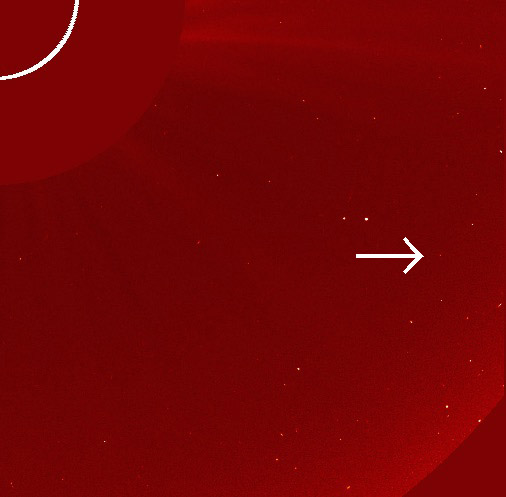
As for the more conventional comets that are observed from the ground, several of them, both long-period and short-period, have been seen to be accompanied by companion objects. For the most part, these tend to be short-lived, however three short-period comets have had accompanying companion comets that have themselves been seen on subsequent returns. One of these is Comet 3D/Biela, a previous “Comet of the Week” that has completely disintegrated. Another is 73P/Schwassmann-Wachmann 3, which split into several fragments in 1995 which then returned as separate objects in 2001 and in 2006 (when all the various fragments passed within 0.08 AU of Earth). While most of these have since faded away, another previously-unseen companion accompanied the comet during its most recent return in 2017, and we’ll see what happens when the comet returns again in 2022. Comet 141P/Machholz 2 had several companion comets during its discovery return in 1994 – the result of an apparent splitting around the previous perihelion passage – and one of these accompanied the main comet at the next return in 1999 but then faded away. Another companion object accompanied the main comet at the return in 2015. The comet passes through perihelion again this week, and just within the past few days at least two dim companion comets have been found accompanying the primary.
An interesting pair of Halley-type comets, C/2002 A1 and C/2002 A2, were discovered by the LINEAR program in January 2002. Both comets have perihelion distances near 4.8 AU and are traveling in almost identical orbits with periods close to 77 years, and they passed perihelion about a week apart. These are clearly the fragments of an earlier single comet.
In addition to the Kreutz sungrazers, there have now been four confirmed examples of related long-period comets. One of these involves a comet discovered by David Levy in March 1988 and another one discovered by the Shoemaker team (with Henry Holt) two months later; the two comets were found to be traveling in almost identical orbits with a difference of 76 days in their respective perihelion passages. Calculations by Brian Marsden suggest that these probably split from each other at the previous return some 13,000 years ago, although the different gravitational perturbations they experienced during this passage through the inner solar system will cause their next returns to be some 400 years apart. Incidentally, the discovery story of the Shoemakers’ comet, which involves an attempt to photograph Levy’s comet but which included some misinterpreted telescope pointing instructions which caused them to photograph an entirely different region of the sky, within which they nevertheless discovered a comet – and all of this taking place on a Friday the 13th – is, in my opinion, one of the “best” comet discovery stories.
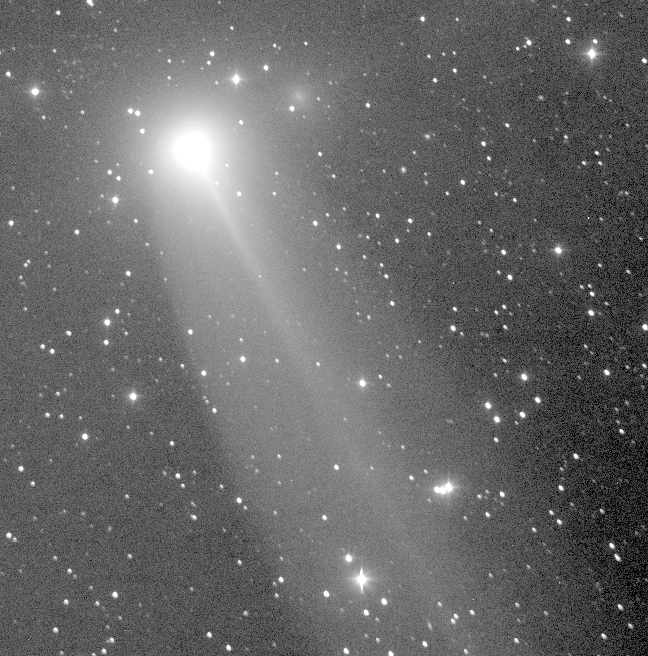
In January 1988 a retired Harvard astronomer residing in Chile, William Liller, discovered a comet which later became a dim naked-eye object of 5th to 6th magnitude. Then, 8½ years later, in August 1996 an Australian amateur astronomer, Vello Tabur, discovered a comet that was found to be traveling in an orbit almost identical to that of Liller’s comet, and Marsden calculated that the two comets would have split from each other at the previous return some 2900 years ago. Almost two decades later, in March 2015 another, fainter member of this “family” was discovered in images taken by the Solar Wind ANisotropies (SWAN) ultraviolet telescope aboard SOHO; this object faded away fairly quickly and was never brighter than 10th magnitude. Then, just a year ago this week the ATLAS program in Hawaii discovered what turned out to be the fourth member of this “family,” C/2019 Y1, which reached 8th magnitude after it passed through perihelion this past March. Whether or not any additional members of this “family” will pass through the inner solar system during the years to come remains to be seen.
A faint comet found by amateur astronomer Gennady Borisov in Ukraine in September 2016 was found to be traveling in an orbit essentially identical to that of a comet discovered almost exactly a century earlier – in September 1915 – by American amateur astronomer John Mellish. Both comets coincidentally passed through perihelion at almost the exact time of year, under poor viewing geometry, and nothing too definitive can be said about their history, although they are clearly two separate comets sharing a common origin (as opposed to two returns of the same comet). More recently, Comet ATLAS C/2019 Y4 was found to be traveling in the same orbit as the Great Comet of 1844 (old style designation 1844 III, new style C/1844 Y1) but was clearly smaller than the earlier comet and disintegrated as it approached perihelion. It was a previous “Comet of the Week” and its story is told more fully in that presentation.
There has been one recent similar case involving apparent asteroids. Last year 2019 PR2 and 2019 QR6, both traveling in Jupiter-family comet orbits with eccentricities of 0.80 and orbital periods of 13.9 years, passed through perihelion (at a heliocentric distance of 1.17 AU) 4.7 hours apart. Although they appeared as separate objects, they are clearly fragments of an earlier single object and – in keeping with a previous “Special Topics” presentation – despite appearing asteroidal they are likely the components of an “extinct” comet. (They bring to mind the “contact binary” appearance of Comet 67P/Churyumov-Gerasimenko – a previous “Comet of the Week” that was visited by ESA’s Rosetta mission – and suggest a similar parent body that perhaps split into its component pieces.)
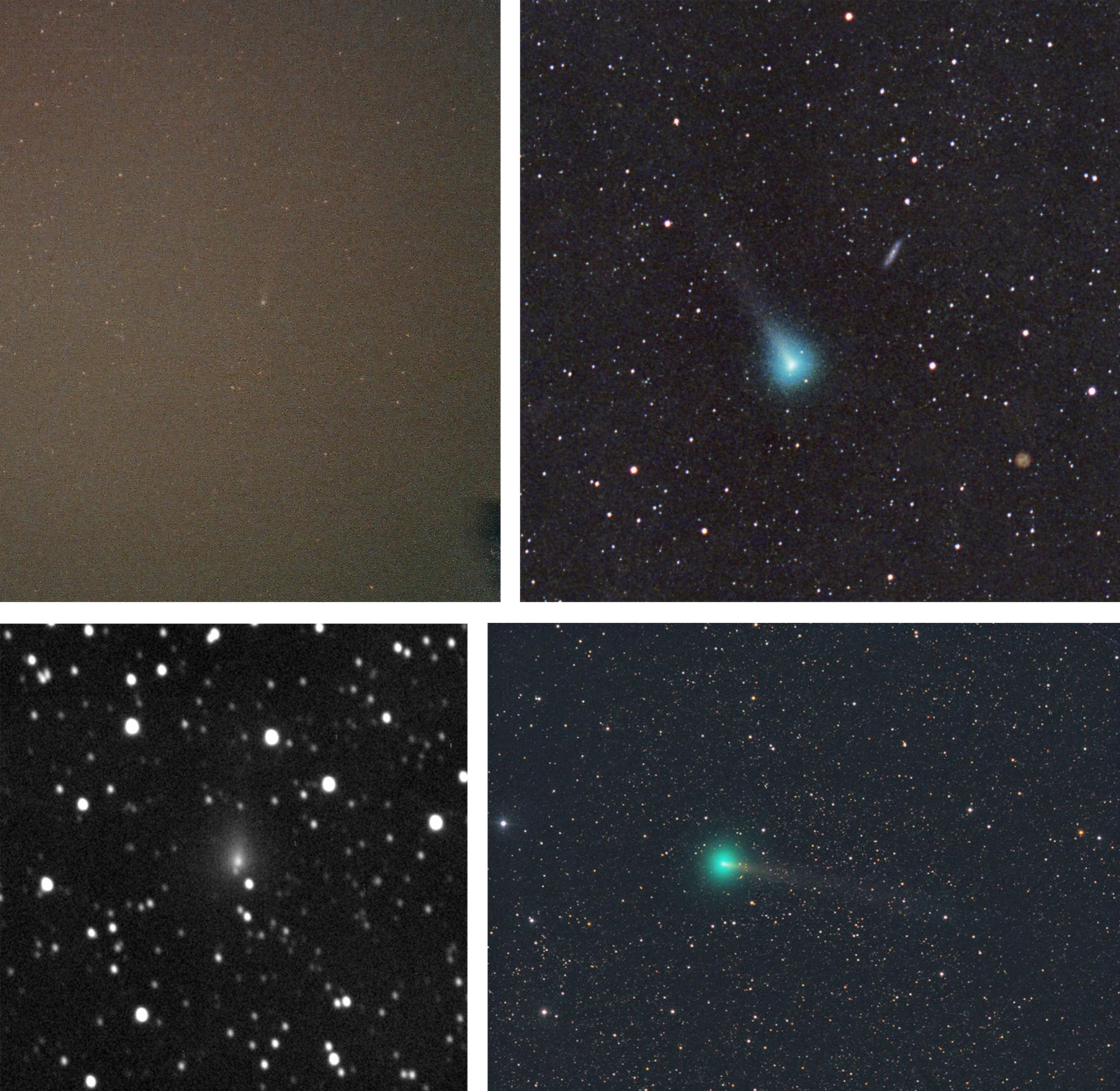
Within the main asteroid belt, a “family” refers to asteroids that share similar orbits that in turn point towards a common origin. Over time various gravitational perturbations by the planets – primarily Jupiter – will modify the asteroids’ orbits to an extent, but certain basic orbital parameters, called “proper elements,” tend to remain unchanged, and it is these upon which classifications into “families” are based. The general consensus is that the various members of a “family” are fragments of a larger parent body – which may or may not still exist as a complete entity today – that resulted from an impact event, and these in turn may have ejected fragments of their own due to additional impact events.
The existence of asteroid “families” was first pointed out by Japanese astronomer Kiyotsugu Hirayama – then at Yale University – in 1918, who argued that the relative similarities between various asteroids’ orbits are greater than would be expected by chance. In his original paper Hirayama identified three such “families,” these being associated with the asteroids (158) Koronis, (221) Eos, and (24) Themis (which, as discussed in last week’s “Special Topics” presentation, has a surface covered with ice). Among the asteroids known at the time, Hirayama identified 13 as being within the Koronis “family,” 19 in the Eos “family,” and 22 within the Themis “family;” today the number of known members in these “families” are over 5900, over 9700, and over 4700, respectively.
Today over 120 asteroid “families” have been identified. The largest of these is the Nysa “family” with over 19,000 known members, the largest of these being (44) Nysa, (135) Hertha, (142) Polana and (495) Eulalia. At least two other “families” have over 10,000 members, and over two dozen other “families” including the three originally identified by Hirayama have over a thousand known members.
In terms of numbers, the second-largest “family” is the one associated with the large main-belt asteroid (4) Vesta, with over 15,000 known members, the largest of these (outside of Vesta itself) being (1929) Kollaa and (2045) Peking, both of which are perhaps 7 to 8 km in diameter. It is probable that most, if not almost all, of the asteroids in the Vesta “family” came about as a result of the impact that produced the large craters Rheasilvia and Veneneia near Vesta’s south pole that were prominent in images taken by NASA’s Dawn mission. Rheasilvia is believed to be approximately one billion years old, and thus many of the Vesta “family” asteroids would be of similar age, although during the intervening time some of these would also have been impacted producing yet even more asteroids in the “family.” Over time some of these third- and fourth-generation objects might be perturbed into Earth-crossing orbits, and eventually might impact Earth. Several hundred meteorites, including well over half of the achondrite meteorites (discussed in a previous “Special Topics” presentation) have compositions consistent with the spectral features in (4) Vesta and are believed to have originally come from that object.
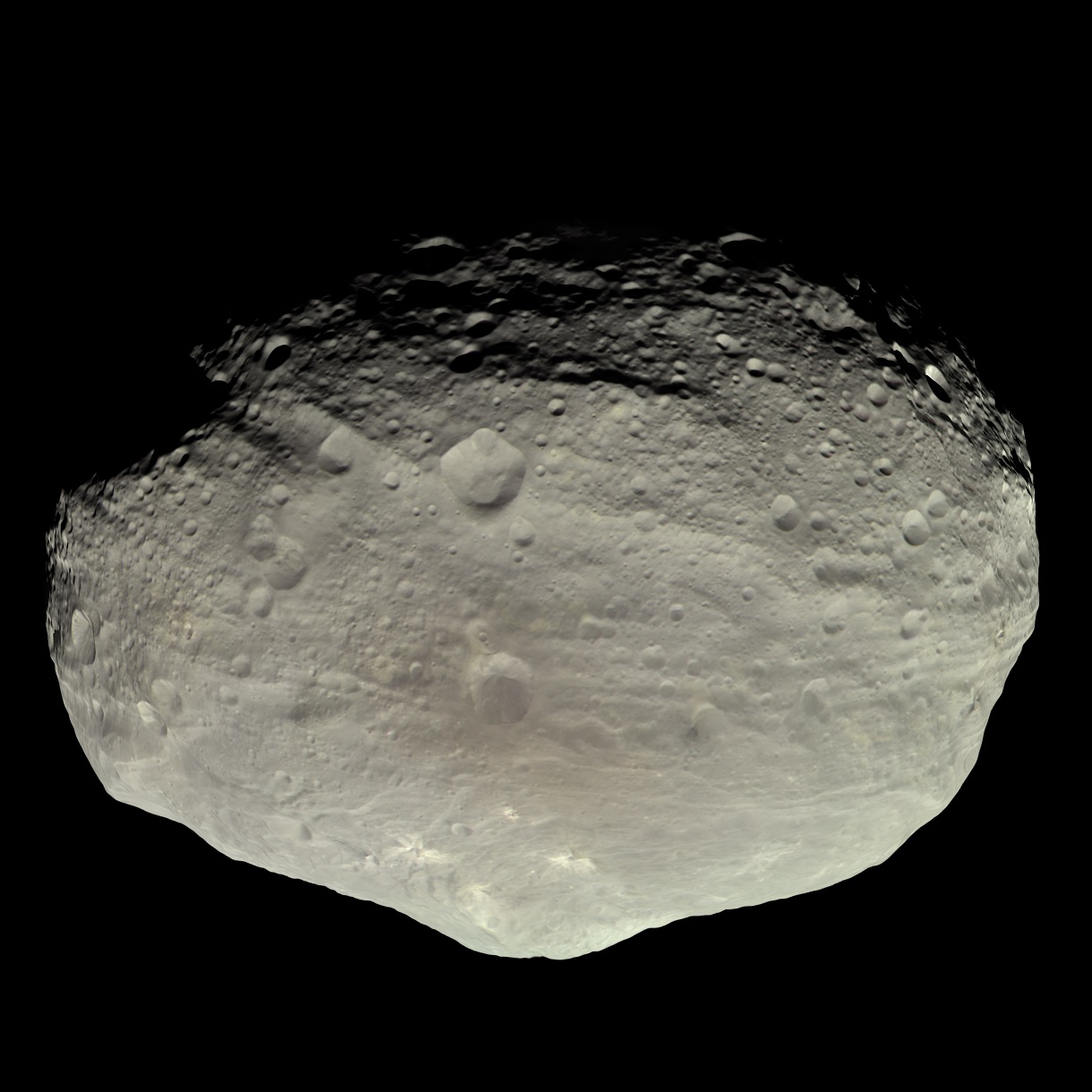
One “family” that has been in the news within the fairly recent past is the one associated with (298) Baptistina, which has approximately 2500 currently-known members. According to a study published in 2007 it appeared that a member of this “family” struck Earth 65 million years ago, resulting in the Cretaceous-Tertiary (K-T) extinction event and the Chicxulub impact crater off the Yucatan peninsula in southern Mexico (these being the subject of a previous “Special Topics” presentation). However, a detailed examination of the asteroids within the Baptistina “family” based upon data taken by the Wide-field Infrared Survey Explorer (WISE) spacecraft in 2010-11 indicates that the impact event that produced this “family” occurred close to 80 million years ago, as opposed to the 160 million years ago that was previously believed. Since it would normally take several tens of millions of years for asteroids in the main belt to get perturbed into Earth-crossing orbits, this is not enough time for one of the asteroids resulting from that impact to make its way to Earth, and thus the object that caused the K-T extinction must have come from somewhere else.
In addition to the asteroid “families,” there are various “groups” of asteroids that share basic orbital characteristics but that do not necessarily share a common origin. The Atira, Aten, Apollo, and Amor populations of near-Earth asteroids – all discussed within the Week 2 “Special Topics” presentation – can each be considered a “group” in this context, as can the various populations of “Trojan” asteroids (the subject of another previous “Special Topics” presentation).
Another “group” is the Hungaria asteroids – after (434) Hungaria – that orbit within the inner main belt with average distances of 1.8 to 2.0 AU (corresponding to orbital periods of 2.4 to 2.8 years), low eccentricities, and moderate orbital inclinations. While there is also a Hungaria “family” within this “group,” not all of the asteroids within the “group” are members of the “family.” Another notable group is the Hilda asteroids – after (153) Hilda – in the outer part of the main belt; these have average heliocentric distances close to 4 AU (corresponding to an orbital period of 8 years), moderate eccentricities, and moderate inclinations. There are two “families” within the Hilda asteroids, the Hilda “family” and the Schubart “family” (after (1911) Schubart) but, again, not all asteroids within the “group” are members of either of these two “families.” Other “groups” include the Griqua asteroids – after (1362) Griqua – with average heliocentric distances of 3.27 AU (corresponding to an orbital period of 5.9 years) and the Cybele asteroids – after (65) Cybele – with average heliocentric distances between 3.3 and 3.7 AU (corresponding to orbital periods between 5.9 and 7 years).
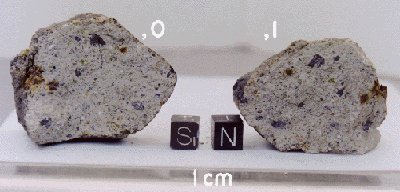
Several of these groups are defined in reference to what are called the “Kirkwood gaps,” so named after Daniel Kirkwood, from Jefferson College in Pennsylvania, who discovered them as far back as 1866. As the term “gaps” implies, these are regions of average orbital distances (or, equivalently, semi-major axes) where there are few if any asteroids, and Kirkwood correctly identified these as being distances that correspond to orbital resonances with Jupiter. Most of these regions are gravitationally unstable in the long term, and any asteroids orbiting within them would be ejected into another orbit within an (astronomically) short period of time.
For example, the Hungaria asteroids orbit just within the 4:1 resonance orbit of Jupiter (semi-major axis 2.06 AU, corresponding to an orbital period of just under 3.0 years). The Cybele asteroids orbit between the 2:1 and 3:2 resonant orbits of Jupiter, and in fact are close to the 7:4 resonant orbit of that planet. The Griqua asteroids actually do orbit within the 2:1 resonant orbit with Jupiter – in what is called the “Hecuba gap” – and are marginally unstable; some of these, including Griqua itself, are carbonaceous and dark and travel in moderately eccentric orbits reminiscent of Jupiter-family comets, and may in fact be extinct cometary nuclei. The Hilda asteroids orbit in the 3:2 resonant orbit with Jupiter, however their orbital configurations are such that when at aphelion they are near the L3, L4, or L5 Lagrangian points – discussed in the “Special Topics” presentation on “Trojan” asteroids – at times when Jupiter is far away, and thus their orbits are stable.
It should be remembered that the Kirkwood gaps refer to the average orbital distances of the asteroids, and not to the physical locations of the asteroids themselves; at any given time any number of asteroids can be passing through the various “gaps.” It is clear, certainly, that the distribution of asteroids within the main belt is far from random, and that the gravitational influences of the planets, Jupiter in particular, have imposed a distinct amount of structure within that distribution. Nothing stays constant, of course, and over the lifetime of the solar system, both past and future, the planets of the solar system undergo distinct changes, and the “small bodies” must accordingly do so as well.
More from Week 51:
This Week in History Comet of the Week Free PDF Download Glossary
Ice and Stone 2020 Home Page


